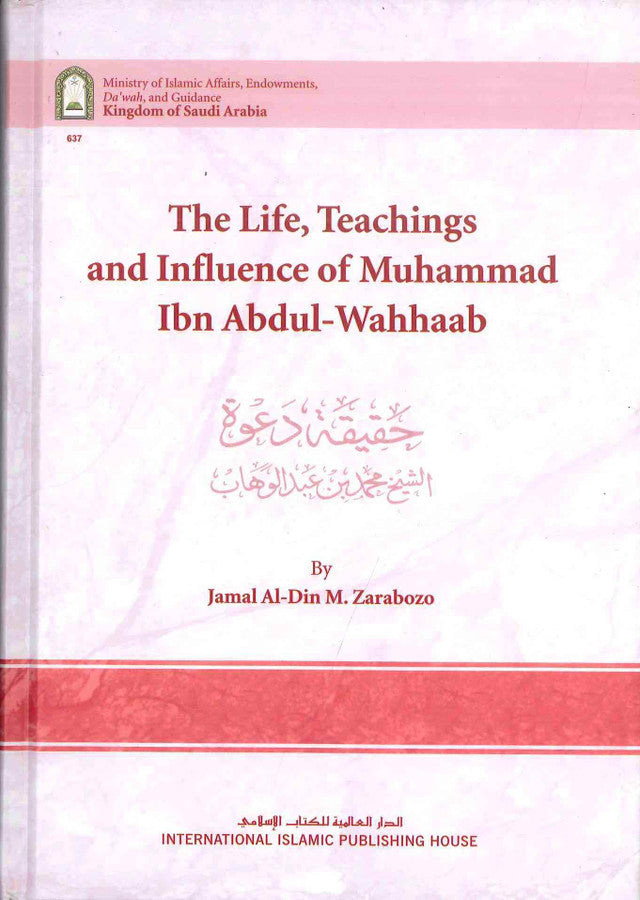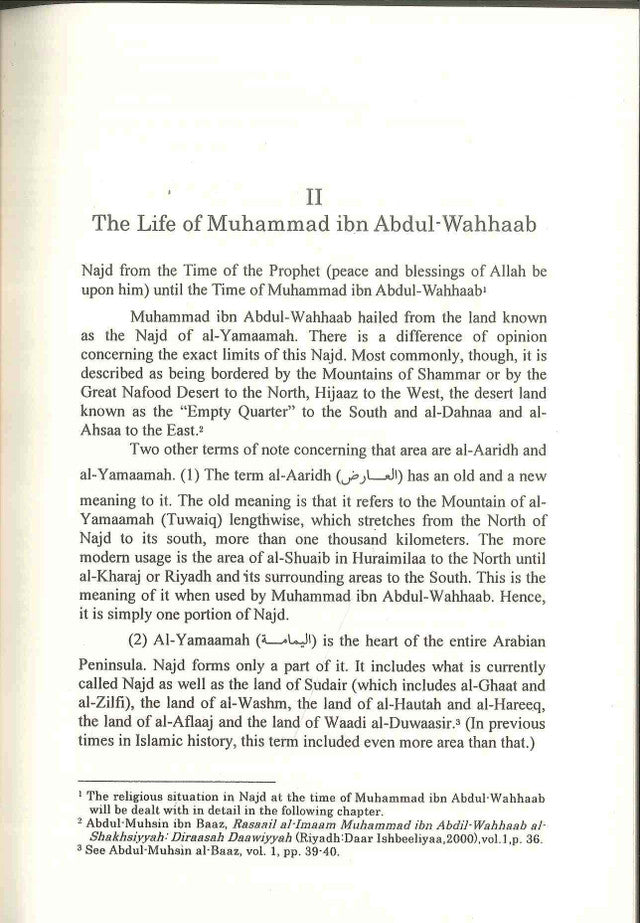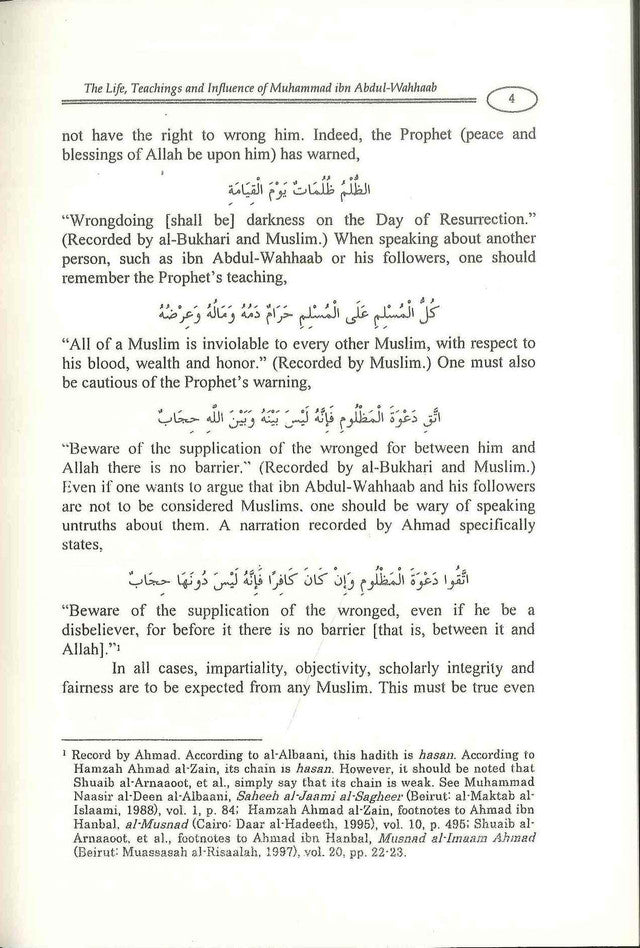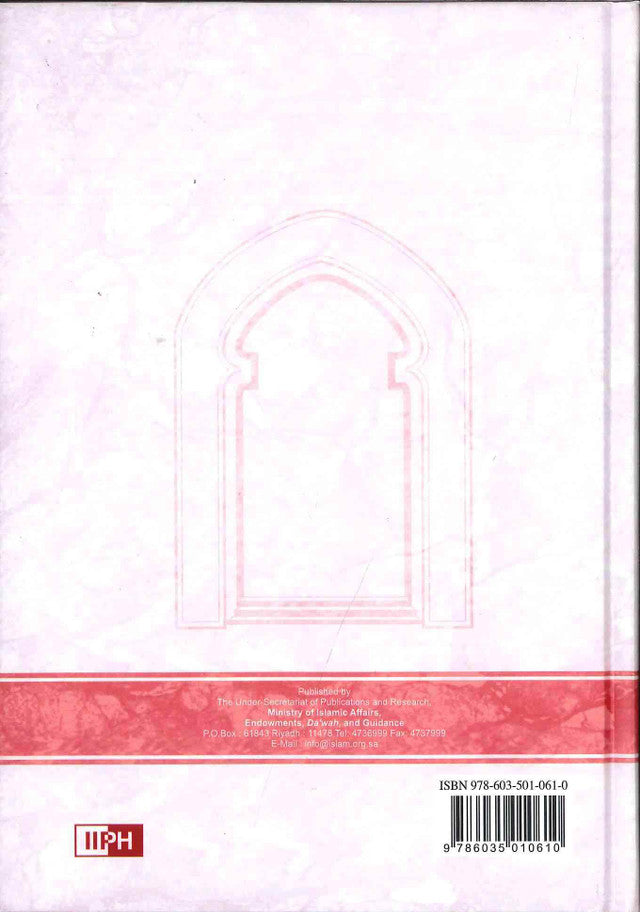The Life Teachings & Influence Of Muhammad Ibn Abdul-Wahhaab
The Life Teachings & Influence Of Muhammad Ibn Abdul-Wahhaab
Publisher:
IIPH (International Islamic Publishing House)
Language:
English
Binding:
Hard Cover
Pages: 398
Size: 17x24cm
Couldn't load pickup availability




Collapsible content
Description of Book
The Life Teachings & Influence Of Muhammad Ibn Abdul-Wahhaab
Publisher
IIPH (International Islamic Publishing House)
Author
Sample Pages - Content
PAGE NO:1
Ministry of Affairs, Endowments.
and Guidance
Kingdom Of Saudi Arabia
The Life, Teachings
and Influence of Muhammad
Ibn Abdul-Wahhaab
By
Jamal A1-Din M. Zarabozo
INTERNATIONAL ISLAMIC PUBLISHING HOUSE
PAGE NO :2
II
The Life of Muhammad ibn Abdul-Wahhaab
Najd from the Time of the Prophet (peace and blessings of Allah be upon him) until the Time of Muhammad ibn Abdul-Wahhaab1
Muhammad ibn Abdul-Wahhaab hailed from the land known as the Najd of al-Yamaamah. There is a difference of opinion concerning the exact limits of this Najd. Most commonly, though, it is described as being bordered by the Mountains of Shammar or by the Great Nafood Desert to the North, Hijaaz to the West, the desert land known as the "Empty Quarter" to the South and al-Dahnaa and al- Ahsaa to the East.
Two other terms of note concerning that area are al-Aaridh and al-Yamaamah. (1) The term al-Aaridh (J) has an old and a new meaning to it. The old meaning is that it refers to the Mountain of al- Yamaamah (Tuwaiq) lengthwise, which stretches from the North of Najd to its south, more than one thousand kilometers. The more modern usage is the area of al-Shuaib in Huraimilaa to the North until al-Kharaj or Riyadh and its surrounding areas to the South. This is the meaning of it when used by Muhammad ibn Abdul-Wahhaab. Hence, it is simply one portion of Najd.
(2) Al-Yamaamah () is the heart of the entire Arabian Peninsula. Najd forms only a part of it. It includes what is currently called Najd as well as the land of Sudair (which includes al-Ghaat and al-Zilfi), the land of al-Washm, the land of al-Hautah and al-Hareeq, the land of al-Aflaaj and the land of Waadi al-Duwaasir. (In previous times in Islamic history, this term included even more area than that.)
The religious situation in Najd at the time of Muhammad ibn Abdul Wahhaab will be dealt with in detail in the following chapter.
2 Abdul Muhsin ibn Baaz, Rasanil al-Imaam Muhammad ibn Abdil-Wahhaab al- Shakhsiyyah Diraasah Daawiyyah (Riyadh:Daar Ishbeeliyaa, 2000), vol.1,p. 36. 3 See Abdul-Muhsin al-Baaz, vol. 1, pp. 39-40.
PAGE NO 3
life. Influence ibn Abdul•VVRhhmzb
4
not have the right to wrong him. Indeed, the Prophet (prate and
blessings of Allah be upon him) has warned.
"Wrongdoing (shall be] darkness on the Day of Resurrection,"
(Recorded by al-Bukhari and Muslim.) When speaking about another
person, such as ibn Abdul-Wahhaab or his followers, one should
jemember the Prophet's teaching,
"All of a Muslim is inviolable to every other Muslim, with Jespeet to
his blood, wealth and honor." (Recorded by Muslim.) One must also
be cautious of the Prophet's warning,
' •Beware thc supplication 01' the wronged for between him and
Allah there is no barrier." (Recorded by al-Bukhari and Muslim,)
Even if one wants 10 argue that ibn Abdul-Wahhaab and his followers
are not to be considered Muslims. one should be wary of speaking
untruths about them, A narration recorded by Ahmad specifically
states,
"Beware of the supplication of the wronged, even if he be a
disbeliever, for before it there is no barrier [that is, between it and
In all cases, impartiality, objectivity, scholarly integrity and
fairness are to be expected from any Muslim, This must bc truc even
i Rooord by Ahmad. According to al-Alboani., ihi8 hadith is hasan. Acan•ding to
Hamzah Ahmad at-Zain, its chain hassn. However. i' should be notcd 'bat
Shuaib al-Arnaaoot. et simply say that ita chain ig weak. Sec Muhammad
S*heeh
Islaami. 198B). vol, i. p. 84: Hamzah Ahmad to Ahmad ibn
Hanbal 8/vAfusnsd(Cairo: Daar al'Hadccth. vol. 10. p, 4Bfi•; Shuaib
Arnaftoot* al.. footnotes to Ahmad ibn Hanbal. Musnnd
(Beirut: Muarsagah 20.
Jamal Al-Din M. Zarabozo
Jamaal al-Din M. Zarabozo is a prominent Islamic scholar and author who converted to Islam in 1976 at the age of 16. Born in France to Catholic parents, he pursued higher education in economics at the University of California, Berkeley, and later at UC Davis. However, he shifted his focus to Islamic studies, studying Arabic and Islamic sciences independently and under the guidance of Dr. Mustafa Azami in Boulder, Colorado




